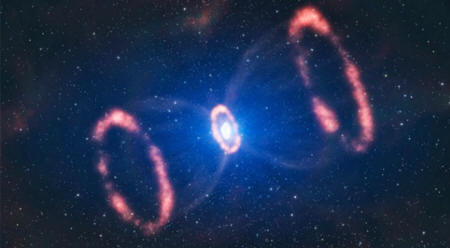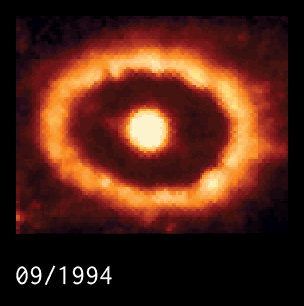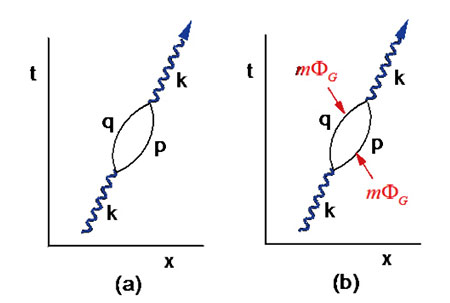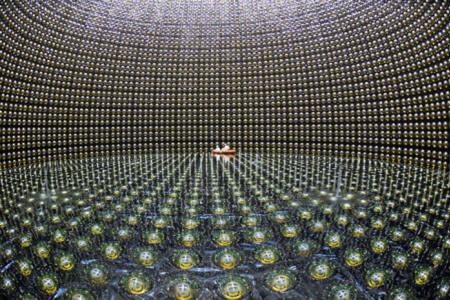|
from ExtremeTech Website
If you know any pedantic science nerds, you've probably been corrected at some point about c, the speed of light, the velocity Einstein famously said could never be surpassed.
Well, soon you may be able to come right back with this:
Physicists have long held that photons should move through a vacuum at a final velocity of 299,792,458 meters per second, but a fresh look at a supernova first seen more than 25 years ago may now contradict that.
If confirmed, these findings would mean that our existing theories of light depend on idealized thought experiments even in a vacuum, and that the intrinsic physics of light actually cause it to slow itself down from the predicted ideal.
After all these years, the speed of light may actually be significantly slower than we thought.
SN 1987A
The data used here comes from a supernova astronomers observed through the latter days of February, 1987 (SN 1987A).
The stellar collapse produced the expected bursts of neutrinos and optical light - but with one oddly-timed burst of photons that confounded traditional theory. The star's collapse should have emitted a burst of neutrinos roughly three hours before a burst of optical light - and from that point on, the pulses should have kept pace, both traveling at the full value of c.
However, the optical light arrived roughly 7.7 hours after the neutrinos, or 4.7 hours late.
Assuming the neutrinos did not travel faster than c, there are only three possible explanations: either the optical photons traveled slower than c, they were emitted later than expected, or they originated from a totally separate and irrelevant event.
The third option has been the traditional explanation, but now University of Maryland researcher James Franson says he has some evidence for the first:
When moving through a medium like air or water, it's the particles that make up the medium that are ultimately responsible for the slower effective speed of light.
In the case of a vacuum though, Franson must invoke a natural property of photons themselves, called "vacuum polarization." In vacuum polarization, a photon spontaneously splits into a positron-electron pair then recombines into a photon at some reliable frequency.
When split, even for a fraction of an instant, Franson says quantum mechanics creates a gravitational potential between the pair of "virtual" particles.
This potential is infinitesimally tiny, and thus so is its final energy impact when the particles recombine into a photon.
That's why this effect has not be observed before; the 1987 supernova presented an opportunity to accurately time photons as they travel 168,000 light-years to reach us.
The study itself (Apparent Correction to the Speed of Light in a Gravitational Potential) claims that reasonable assumptions for the magnitude of this gravitational potential could easily lead to the observed delay of 4.7 hours.
The implications of this seemů large.
If light traveling from the SN 1987A supernova was delayed 4.7 hours over 168,000 light years, that means light from the Messier 81 galaxy about 12 million light years from Earth would be delayed by almost two weeks in reaching us.
Obviously, Franson will need more evidence to support his claims, but that evidence could be hard to find.
More neutrino-photon delay times would be nice, but that's difficult data to collect, and we don't get to decide when it will arrive (read Wireless Neutrino Network Could Pass Through the Center of The Earth.)
This neutrino detector uses distilled water laced with gadolinium to try to determine the direction of an incoming neutrino.
Many astrophysicists and astronomers are pushing for the construction of super-quick neutrino detectors, instruments speedy enough to let us track galactic neutrinos back to their source and capture a supernova occurring inside the Milky Way itself.
Such a close-up view of an exploding star could be a watershed moment for astronomy, but without the proper tools for detection it could easily go by before we even notice it's happening.
Though the idea of gravitationally self-interfering photons has been discussed informally for some time, this month's publication in the New Journal of Physics has already sparked debate in the peer-review community, and will no doubt be the subject of controversy in coming months.
This is a fascinating paper that will add yet another layer of significance to the next nearby supernova we manage to observe.
As happens so often, astronomers may end up having to wait patiently for one of these great astronomical events to swoop in and settle their dispute - assuming we have equipment ready to capture it.
|




